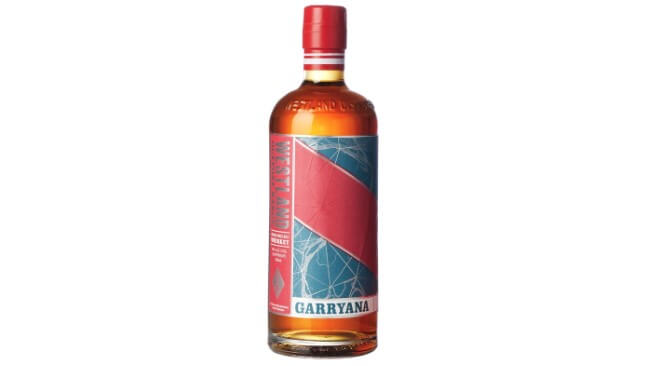Tasting: 3 Outpost Range Malt Whiskeys from Westland Distillery (Colere, Garryana, Solum)
Photos via Westland Distillery
To a certain subset of American spirits drinkers–really, to a lot of these people, if we’re being honest–it probably feels like the category of American single malt whiskey has suddenly sprung up overnight. Reinforced by the TTB’s official recognition and definition of the category in 2023, it has become clear to even the casual whiskey drinker that American single malt is “having a moment,” as it were, but it’s easy for these consumers to miss the fact that this moment is the result of pioneering work put in by distillers of this American subset of malt whiskey, not just for years but for decades. So many still “young” distillers of American single malt have been effectively coming of age in recent years, able to offer a substantially mature and well-aged product after putting in the time and effort to make that a possibility. Seattle’s Westland Distillery is an archetypal example–founded in 2010, they’ve been at it for a decade and are just now seeing the category discovered by a wider base of whiskey fans.
Westland’s core, flagship product is like a fusion of all the elements one can potentially find in American single malt, wrapped up in a single bottle. It’s matured in both newly charred oak and ex-bourbon barrels for a minimum of three years, alongside first and second-fill Oloroso sherry casks. It’s made from an expansive grain bill that includes not just standard pale malts but a rainbow of gentle and more intensely roasted malts typically seen more frequently in the craft brewing world. Effectively, it combines both the hallmarks of American single malt whiskey, and techniques more common in the world of scotch whisky to create a hybrid.
The distillery’s limited release Outpost Range, on the other hand, is less a synthesis of all elements and more a trio of more specific explorations of individual elements that lend flavor to whiskey. Where the Colere series drills in specifically on heirloom varieties of malt barley with a light sherry cask influence, the Garryana instead revolves around the native oak of the Pacific Northwest, and the Solum delves into the still embryonic world of peated malt being produced in the U.S., rather than Scotland. Together, they offer a crash course in the very different ways that a distillery might approach making “malt whiskey” in the U.S. And we happen to have samples of all three Outpost Range entries, so let’s dive right into tasting them.
All three are bottled at 50% ABV (100 proof), with MSRPs of $150.
Westland Distillery Colere Single Malt Whiskey

The Colere series is built around allowing Westland to experiment in specific, heirloom varieties of malted barley, without as much influence from finishing casks. This one, Colere Edition 3, was made from Pilot barley that was bred and grown “outside the commodity system in Washington State’s Skagit Valley which lies an hour north of Westland’s distillery in Seattle.” As the distillery puts it, “Edition 3 utilizes Pilot barley, a 2-row variety that traces its lineage back to grain breeders in the United Kingdom. This barley has been selected for its benefits in the field and has introduced an herbal tea note. The singular use of the 2nd fill Oloroso hogshead gave this release backbone without distorting the barley-focused nature of the whiskey itself.”
Colere Edition 3 uses only a small amount (7%) of liquid matured in 2nd fill Oloroso sherry casks, and was apparently initially fermented with Belgian brewer’s yeast, which is an interesting touch.
On the nose, Colere is really quite malty sweet and fruity, with a surprisingly tropical dimension. I found myself fascinated and intrigued by a banana-like note in particular, combining with tart apple, and more of a sweet malt tea and gentle nuttiness. Upon seeing the use of the Belgian beer yeast, I can’t help but think that the fruit notes in particular may have originated there, and it’s a really interesting character that has been imparted. On the palate, you again get that combination of tropical fruit along with vanilla and more recognizable oxidized sherry nuttiness, with hints of golden raisin and toasted bread. This is pleasantly unique among American single malt whiskeys I’ve tasted, and I can’t quite think of anything else to directly compare it with.
Westland Distillery Garryana Single Malt Whiskey

Where Colere seeks to relatively minimize the impact of oak on the flavor profile, Garryana instead celebrates it. The name is drawn from the common Pacific Northwest subspecies of oak, Quercus garryana, not so commonly utilized as the Quercus alba white oak that grows further east. This native oak is then beefed up with the use of PX sherry and red wine casks. As the distillery puts it: “The 8th Edition of Garryana stands as another step forward in our exploration of Garryana oak. This release combines the sturdy and savory spice qualities of Garry Oak with the rich and dark fruit tones from Pedro Ximenez sherry casks and Washington State red wine casks. Garryana 8 showcases the potent spice notes of Garryana oak while working with wine cask finishes to create a floral and rounded sip.”
This is aged primarily in virgin, newly charred Quercus garryana, and blended with Westland malt whiskey from those PX sherry butts and red wine casks.
On the nose, Garryana displays a distinctly more dry, oak-inflected character that is likewise full of woody spice. There are hints of vinous red fruit, though it’s not as naturally fruit-forward as the Colere. Instead, there’s more of an earthy backnote here, with leather and toasted dry spices. On the palate, this opens up with more big spice notes, including heavy cassia bark, along with berries and a roast-forward mocha. The fruit takes on a brighter red fruity tone with flashes of raspberry/strawberry, and is fairly prominent, though there’s also a bit of smoke to the char, as if there was a tiny portion of peated malt involved–presumably this comes from some of the roasted brewer’s malt in the grist. This is definitely more of a wood-forward, contemplative dram compared to the sunny sweetness of the Colere.
Westland Distillery Solum Single Malt Whiskey

Solum is a particularly interesting and groundbreaking experiment for Westland, the culmination of its research and conservation efforts in the project of producing American peat to fuel the creation of American peated malted barley. As the distillery puts it: “The first of its kind, Solum is the first peated malt whiskey to be made commercially in the United States, a challenge that Westland Distillery was keen to overcome. Prioritizing the local ecosystem, Westland’s peat is harvested below the bog’s waterline instead of draining and excavating the bog first. With a complex smokey and herbaceous flavor profile, Solum Edition 1 is truly reflective of the flora of the region.”
Effectively, this is an American single malt take on classic peated malt whiskies of Scotland, something that other distilleries typically achieve through the use of imported peated malt from the U.K. Aged in newly charred oak, this combined with the locally produced peated malt puts a decidedly American spin on the style.
On the nose, Solum presents with delicate, peaty herbaceousness. There is “smoke,” certainly, but it’s on the reserved side–no one would be mistaking this for the likes of Laphroaig. What you’re getting instead is a delicately roasted herbal and earthy character, with traces of aromatic oak spice, chocolate and hints of red fruit. On the palate, this segues into a very pleasant and gentle peated smokiness, reminiscent of singed herbs (sage, rosemary), backed up by more confectionery sweetness that evokes cocoa, honeycomb and vanilla cake, along with cinnamon spice. The restraint here is definitely admirable, as Westland has avoided the presumed temptation to go really over the top in their application of the newly unlocked peated malt–that, or this malt is simply much more subtle than comparable, more bombastic ones produced elsewhere such as Scotland. Either way, this makes for a very pleasant sipper that should be accessible to those who find so many Islay scotches to be over the top in their presentation.
Jim Vorel is a Paste staff writer and resident beer and liquor geek. You can follow him on Twitter for more drink writing.







































